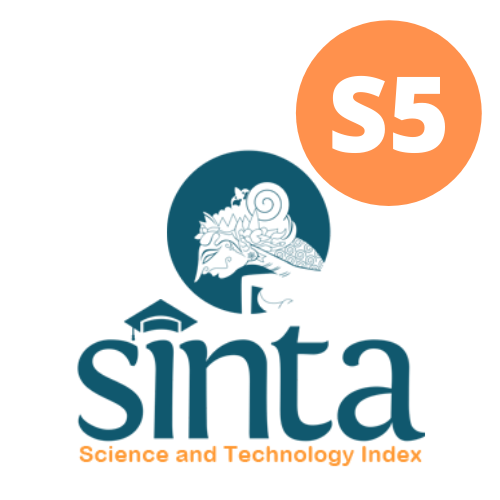PRONATION POSITION OF OXYGEN SATURATION, RESPIRATORY AND PULSE FREQUENCY IN LOW BIRTH WEIGHT BABIES
DOI:
https://doi.org/10.47522/jmk.v1iIAHSC.112Keywords:
Pronation position, Oxygen Saturation, Pulse Frequency, Respiratory Frequency, LBWAbstract
Introduction: Data from WHO 2018 shows the prevalence of LBW is estimated at 21% globally with a limit of 4.5%-40%. LBW babies often have complications in the form of Respiratory Distress Syndrome and an increase in pulse rate. One way to prevent complications is to place the baby in a prone position. Based on scientific article searches, this literature review aims to determine the effect of pronation position on oxygen saturation, pulse rate, and respiratory rate in LBW infants.
Method: The type of research was a Literature Review with meta-analysis. Journal searches are carried out on the electronic basis of Google Scholar, Garuda Portal, One Search, and Pubmed, totaling 30 articles. The literature used is literature published from 2016 - 2021.
Results: The study results of 30 articles found that the average oxygen saturation before and after being given a pronation position was in the range of 90.27% - 98.1%. The average pulse frequency before and after being given a pronation position was in the range of 144.87 x/minute -140.90 x/minute. The average breathing frequency before and after being given a pronation position was in the range of 69.50 x/minute – 44.18 x/minute. All articles have the effect of pronation position on oxygen saturation in infants (LBW). There is an effect of pronation position on oxygen saturation, respiratory, and pulse with p-value <0,05.
Conclusion: It was concluded that the pronation position affected the oxygen saturation, pulse rate, and respiratory frequency in LBW infants. It is expected for nursing services to make the provision of a pronation position as one of the nursing interventions and become a standard operating procedure in the management of LBW infants.
References
Anggraeni, L. D., Indiyah, E. S. and Daryati, S. (2019) ‘Pengaruh Posisi Pronasi Pada Bayi Prematur Terhadap Perubahan Hemodinamik’, Journal of Holistic Nursing Science, 6(2), pp. 52–57.
Apriliawati, A. (2016) ‘The Effect Of Prone Position To Oxygen Aturations’level And Respiratory Rate Among Infants Who Being Installed Mechanical Ventilation In Nicu Koja Hospital,’ in The 2nd International Multidisciplinary Conference 2016 November 15th, pp. 541–546.
Cristina, M. and Mattos, V. De (2019) ‘Autonomic responses of premature newborns to body position and environmental noise in the neonatal intensive care unit,’ Rev Bras Ter Intensiva, 31(1), pp. 296–302. DOI: 10.5935/0103-507X.20190054.
Dyah, D. A., Rustina, Y. and Waluyanti, F. (2017) ‘Sleep Positioning By Levine’s Conservation Theory Approach Can Optimize Enteral Nutrition In Low Birth Weight Infants,’ Jurnal Ilmu Kesehatan UMC, pp. 33–34.
Efendi, D. (2019). Pemberian Posisi (Positioning) dan Nesting pada Bayi Prematur: Evaluasi Implementasi Perawatan di Neonatal Intensive Care Unit (NICU). Jurnal Keperawatan Indonesia, 22(3),169–181. https://doi.org/10.7454/jki.v22i3.619
Kattwinkel. (2016). Neonatal Resuscitation: American Heart Association Guidelines for Cardiopulmonary Resuscitation and Cardiovascular Care. Official Journal of The American Academy of Pediatrics, 126(5),1400-1413. https://doi.org/10.1542/peds.2010-2972E
Lestari, P. (2018). Quarter Turn From Prone Position Increases Oxygen Saturation in Premature Babies With Respiratory Distress Syndrome. Jurnal Keperawatan Soedirman, 13(1).38-44.
http://download.garuda.ristekdikti.go.id/article.php?article
Lucchini, A. et al. (2018) ‘Intensive & Critical Care Nursing Application of prone position in hypoxemic patients supported by venovenous ECMO q's, Intensive & Critical Care Nursing. Elsevier Ltd. doi: 10.1016/j.iccn.2018.04.002.
Mirshahi et al. (2021). The Effect of Position on Oxygen Saturation and Heart Rate in Very Low Birth Weight Neonates. Caspian Journal of Pediatrics, 2(2),153-157. https://doi.org/10.22088/acadpub.BUMS.2.2.153
Mukhlis, H. and Marini, M. (2020) ‘Pengaruh terapi murottal terhadap denyut nadi dan pernafasan pada bayi dengan berat badan lahir rendah’, Indonesia Berdaya, 1(1), pp. 29–37.
Noor, M, dkk. (2016). Penggunaan Nesting dengan Fiksasi Mampu Menjaga Stabilitas Saturasi Oksigen, Frekuensi Pernafasan, Nadi dan Suhu Pada Bayi Prematur dengan Gawat Napas: Studi Kasus. Jurnal Ners Indonesia, 6(1),65-76. http://download.garuda.ristekdikti.go.id/article.php?article
Oktariani, L., Sari, R. S. and Sari, F. R. (2020) ‘Pengaruh Posisi Pronasi Pada Bayi Prematur Yang Terpasang Cpap Terhadap Status Hemodinamik Di Ruang Nicu Rs An-Nisa Tangerang’.
Sarli, D. (2017) Buku Ajar Asuhan Kebidanan pada Masa Persalinan. cetakan 1. Edited by Rio Firmansyah. Padang: Sinar Ultima Indah.
Sarli, D. et al. (2021) ‘Developing Birth Preparedness and Complication Readiness ( BPCR ) Screening Based on Android Applications,’ 11(1), pp. 92–98.
Sirait, R, H. (2020). Pemantauan Hemodinamik Pasien. Jakarta: FKUI
orabian et al. (2019). Comparison of the Effects of Supine and Prone Positions on Oxygen Saturation and Vital Signs in Premature Infants: a Crossover Clinical Trial. Iranian Journal of Neonatology, 10(2),30-36.https://doi.org/10.22038/ijn.2019.32928.1465
Downloads
Published
How to Cite
Issue
Section
License
Copyright (c) 2021 Jurnal Mitra Kesehatan

This work is licensed under a Creative Commons Attribution-NonCommercial-ShareAlike 4.0 International License.
Jurnal Mitra Kesehatan memberikan akses terbuka terhadap siapapun agar informasi pada artikel ini dapat bermanfaat bagi orang banyak. Jurnal dapat diakses tanpa dipungut biaya, sesuai dengan lisensi creative commons yang digunakan.










